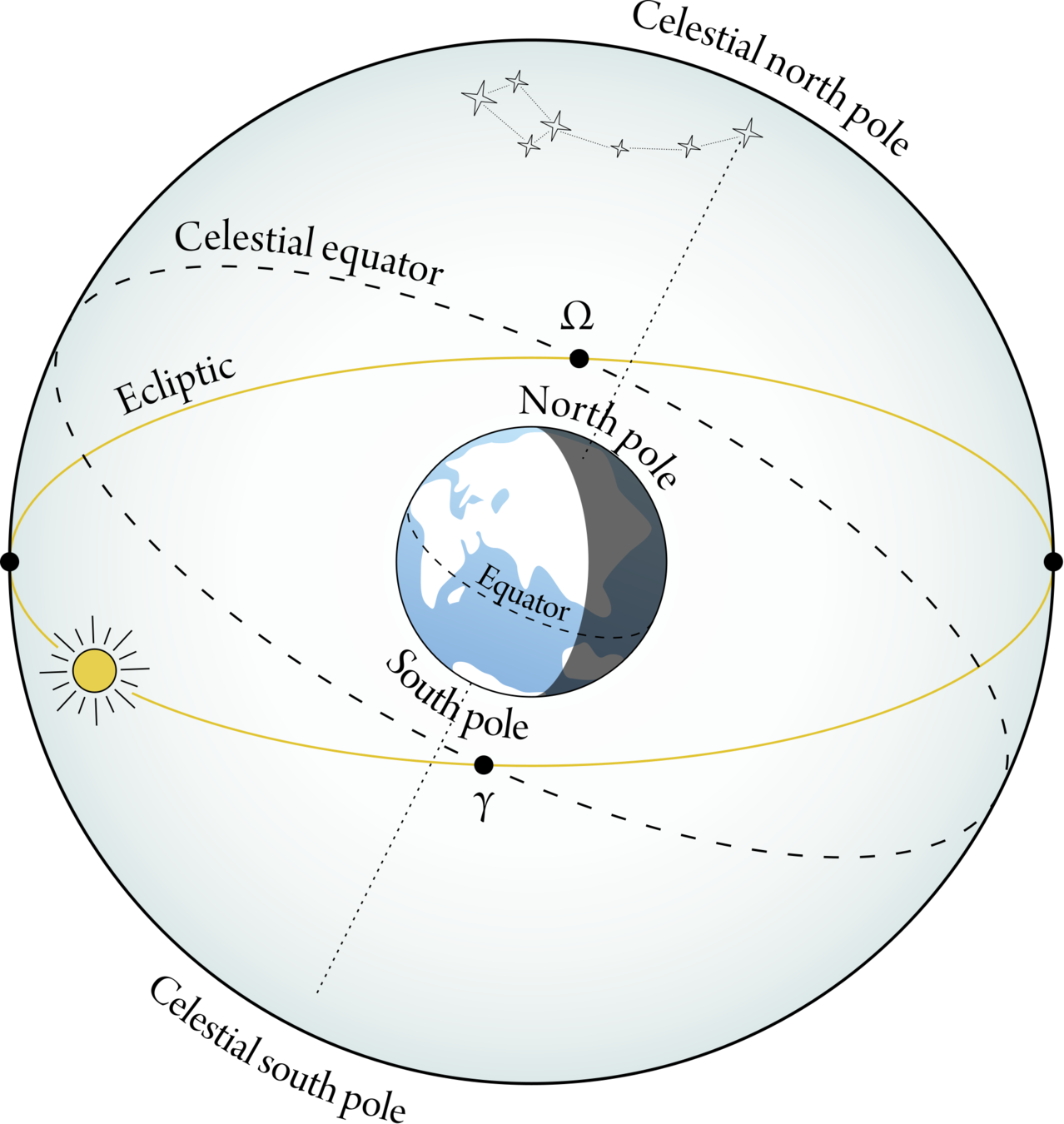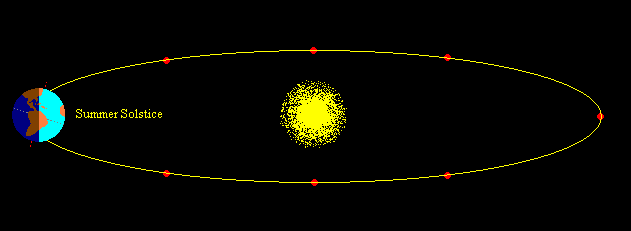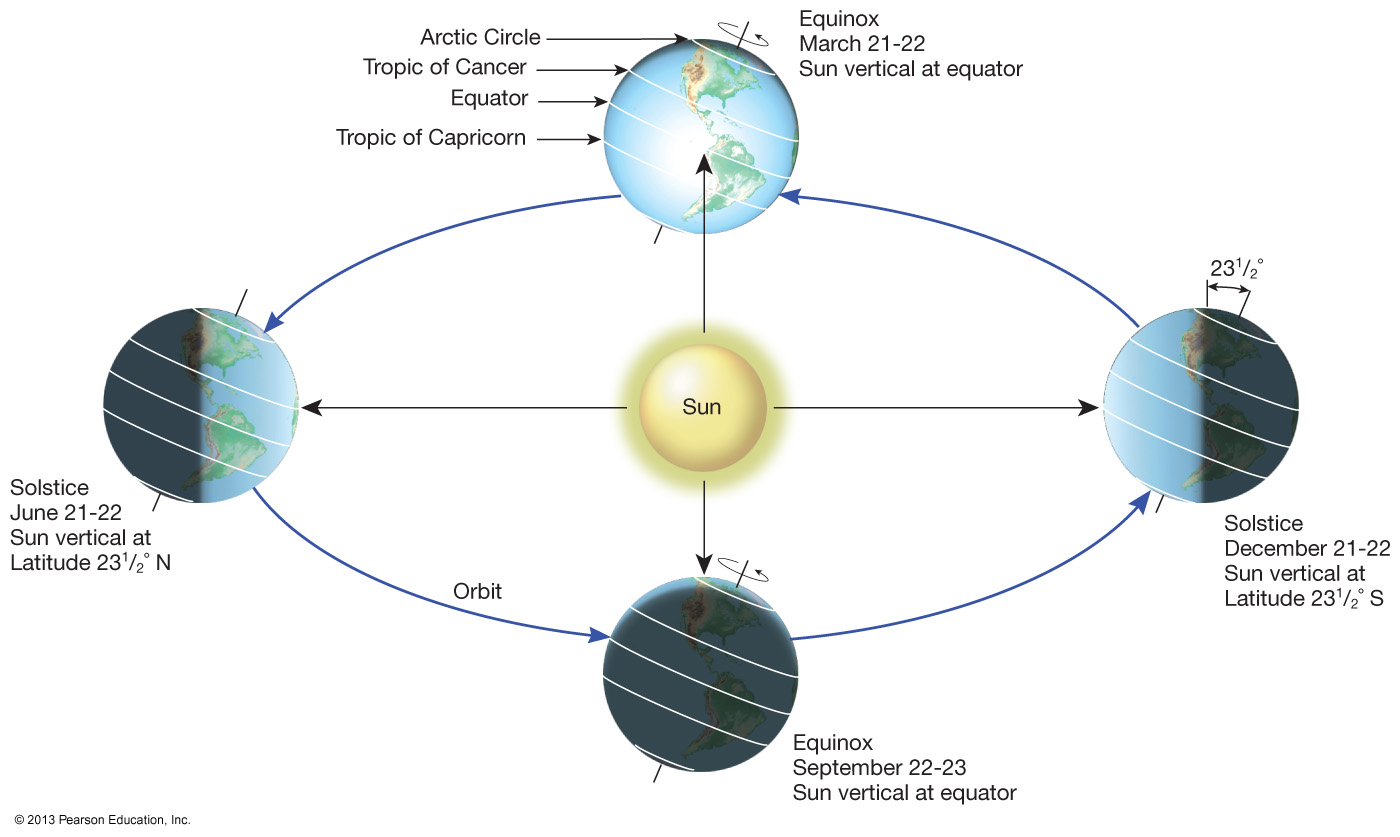Our View of The Universe
M. Rocha
Astronomy 1 - Lecture 2
-
The Celestial Sphere
-
Constellations
-
References and Coordinate Systems
-
Diurnal and Anual Motions
-
The Seasons
-
Other Motions of The Celestial Sphere
Our View of The Universe:
Useful Links
The Big Picture
Cosmic Neighborhood



.04 light seconds
5 light hours
10 Mega ly (Mly)
40 light years (ly)
100,000 ly
3 Mega parsecs (Mpc)
55 Mly
17 Mpc
100 Mly
320 Mpc
The Big Picture

Cosmic Motions
The Celestial Sphere

The Celestial Sphere


-
Vast distances to stars prevent us from sensing their true 3-D arrangement
-
Naked eye observations treat all stars at the same distance, on a giant celestial sphere with the Earth at its center
Constellations

Constellations are fixed arrangements of stars that resemble animals, objects, and mythological figures
Constellations
Stars in a constellation are not physically related, they just appear to be close to each other when projected on the 2D surface of the celestial sphere


Constellations
Constellations are fixed arrangements of stars that resemble animals, objects, and mythological figures



Constellations
Constellations are fixed arrangements of stars that resemble animals, objects, and mythological figures



Constellations
Constellations serve as a references in the sky

Constellations serve as references on the sky, the whole celestial sphere is subdivided in 88 constellations regions
Constellation Boundaries



The Zodiac Constellations
On the celestial sphere, the Sun passes in front of the zodiac constellations through the year


The Ecliptic

The path of the Sun through the stars on the celestial sphere is called the ecliptic

The Celestial Equator

The celestial equator is a projection of the Earth's equator on the Celestial Sphere, and is tipped by 23.4° with the ecliptic

The Ecliptic and Celestial Equator on the Celestial Sphere
The celestial equator is a projection of the Earth's equator on the Celestial Sphere, and is tipped by 23.4° with the ecliptic

Horizon Based Coordinate System


Altitude (degrees): Angle measured from horizon to object. Horizon = 0°, Zenith = 90°
Azimuth (degrees): Angle measured clockwise from North to East. N = 0°, E = 90°, S = 180°, W = 270°
Azimuth = 135° (SE)
Equatorial Based Coordinate System
Right Ascension (hours): Angle measured in hours (1 hr = 360°/24 = 15° ) along the Celestial Equator from the Vernal Equinox towards the East

Observer Independent!
Declination (degrees): Angle measured from the Celestial Equator (CE) towards the North Celestial Pole (NCP).
CE = 0°, NCP = 90°
The Milky Way on The Celestial Sphere


The ecliptic plane (earth around the sun) is tilted 60° with respect to the galactic plane (sun around the center of the galaxy)
The Milky Way on The Celestial Sphere



The Motions Of The Celestial Sphere
Diurnal Motion: Daily motion due to Earths rotation on its axis
Annual Motion: Yearly motion due to Earths revolution around the sun



Diurnal Motion
Through the night, stars move in a circle around the northern star Polaris (the north celestial pole)



Diurnal Motion
Through the night, stars move in a circle around the northern star Polaris (the north celestial pole)

For a given time (say 10:00 PM), as the months proceed, constellations do not appear in the same part of the sky
Anual Motion


The Seasons are a consequence of Earth's revolution around the sun, and the tilt of it's axis with respect to the ecliptic plane
Annual Motion: The Seasons


In the summer, sun beams hit the tropics face on.
In the winter, sun beams hit the tropics at an angle.
The Seasons are a consequence of Earth's revolution around the sun, and the tilt of it's axis with respect to the ecliptic plane
Annual Motion: The Seasons

The Sun follows different paths through the sky depending on the Season
Annual Motion: The Seasons

At the
Tropic of Cancer
June 21
Dec 21

North of the
Tropic of Cancer
S
N
N
S
June 21
Dec 21

Annual Motion: Parallax

1 arc minute = 1°/60
1 arc second = 1 arc minute/60
Long Time Scale Motions

In time scales of 10,000-100,000 years, the proper motions of starts will make them change their position on our celestial sphere. This changes the shape of constellations in VERY LONG time scales
Orion's change from 50,000 BCE to 100,000 CE
Long Time Scale Motions

Due to the precession of Earth's rotation axis, the northern start is not always Polaris. In 13,000 years from now Vega will be a better guide to the North Celestial Pole (NCP)